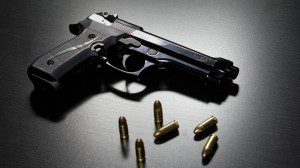 On June 22, 2017, the United States Supreme Court decided the case of Charles Turner and Russell Overton v. United States. Petitioners and several others were indicted for the kidnaping, robbery, and murder of Catherine Fuller. At trial, the Government advanced the theory that Fuller was attacked by a large group of individuals. Its evidentiary centerpiece consisted of the testimony of Calvin Alston and Harry Bennett, who confessed to participating in a group attack and cooperated with the Government in return for leniency. Several other Government witnesses corroborated aspects of Alston’s and Bennett’s testimony.
On June 22, 2017, the United States Supreme Court decided the case of Charles Turner and Russell Overton v. United States. Petitioners and several others were indicted for the kidnaping, robbery, and murder of Catherine Fuller. At trial, the Government advanced the theory that Fuller was attacked by a large group of individuals. Its evidentiary centerpiece consisted of the testimony of Calvin Alston and Harry Bennett, who confessed to participating in a group attack and cooperated with the Government in return for leniency. Several other Government witnesses corroborated aspects of Alston’s and Bennett’s testimony.
Melvin Montgomery testified that he was in a park among a group of people, heard someone say they were “going to get that one,” saw petitioner Overton pointing to Fuller, and saw several persons, including some petitioners, cross the street in her direction. Maurice Thomas testified that he saw the attack, identified some petitioners as participants, and later overheard petitioner Catlett say that they “had to kill her.” Carrie Eleby and Linda Jacobs testified that they heard screams coming from an alley where a “gang of boys” was beating someone near a garage, approached the group, and saw some petitioners participating in the attack. Finally, the Government played a videotape of petitioner Yarborough’s statement to detectives, describing how he was part of a large group that carried out the attack. None of the defendants rebutted the prosecution witnesses’ claims that Fuller was killed in a group attack. The seven petitioners were convicted.
Long after their convictions became final, petitioners discovered that the Government had withheld evidence from the defense at the time of trial. In postconviction proceedings, they argued that seven specific pieces of withheld evidence were both favorable to the defense and material to their guilt under Brady v. Maryland. This evidence included the identity of a man seen running into the alley after the murder and stopping near the garage where Fuller’s body had already been found; the statement of a passerby who claimed to hear groans coming from a closed garage; and evidence tending to impeach witnesses Eleby, Jacobs, and Thomas. The D.C. Superior Court rejected petitioners’ Brady claims, finding that the withheld evidence was not material. The D.C. Court of Appeals affirmed.
It is a shame that our Courts must reach the materiality question in cases of deliberately withheld evidence. Just as the mere appearance of impropriety is a basis for a judge to recuse themselves from a case, the mere potential that deliberately withheld evidence could have changed the outcome should demand that a conviction be reversed. Prosecutors, like judges are required to do justice as opposed to advocating for a private individual. If the mere appearance of impropriety for a judge is enough to require recusal to foster public trust in the justice system, the same should be true for convictions obtained after a prosecutor deliberately withholds any exculpatory evidence.
